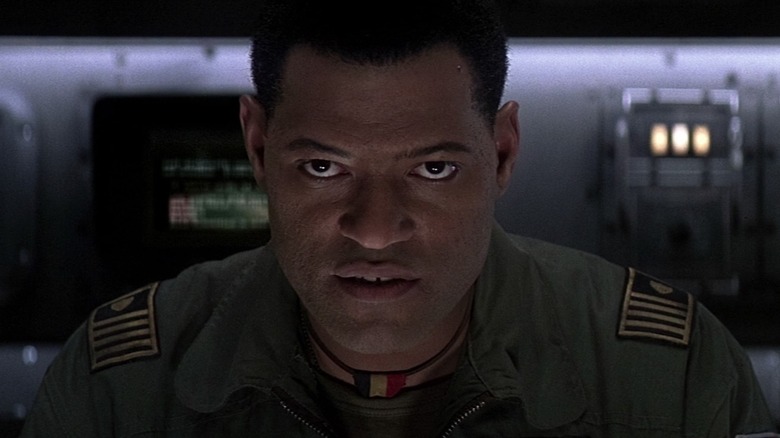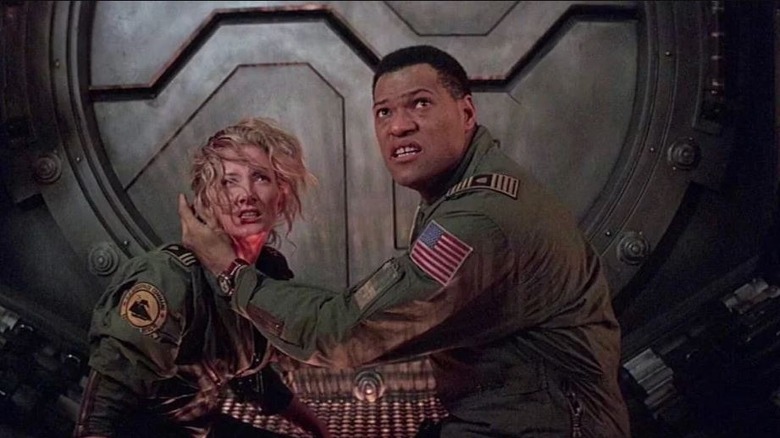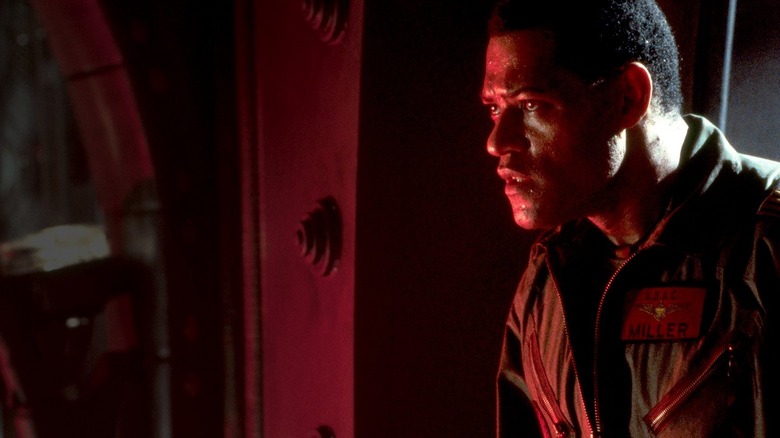How Laurence Fishburne Helped Keep Paul W.S. Anderson's Event Horizon On Track
While Paul W.S. Anderson is a good ol' veteran of Hollywood movie making now, once upon a time, he was a green movie director still trying to learn the ropes of the biz behind the scenes. Anderson came on the scene in the early 90s with his feature film debut, "Shopper." What really caught the attention of Hollywood was the film that came after that. 1995's "Mortal Kombat," which marked Anderson's second feature film, was a commercial success.
Wanting to venture into R-rated fare, his next project was "Event Horizon," which ended up being an incredibly challenging film for the inexperienced director. "Event Horizon" takes place in space seven years after the initial disappearance of the titular ship. The crew of Lewis and Clark are sent out on a rescue mission after receiving a distress signal from the Event Horizon. After discovering the crew dead, they must determine the cause. But as they soon begin to realize, the ship has other plans and the threat to their minds, bodies, and souls is now at stake.
What is now considered a sci-fi horror movie classic, "Event Horizon" was a production nightmare. Filming and editing were rushed by Paramount to fill in the missing slot that an unfinished "Titanic" left at the time. Anderson made the best of the time crunch and made the best of the situation, but it was clear that the director needed some help. Fortunately for him, the cast understood his limitations and helped guide him.
No acting required
This year marks the 25th anniversary of "Event Horizon," which means Anderson has had time to reflect on his time working on the film. While chatting with IndieWire earlier this year, he remarked on the fact that the sci-fi horror film gave him an opportunity to work with a team of incredibly experienced actors compared to his first two films. This was a major gift for him and, as it turned out, the experience of working with this ensemble of actors turned out to be a lesson in the powers of collaboration.
"I think they all realized that it was only my third film and I didn't come from a big theater background," Anderson said. "They really helped me, and [Laurence] Fishburne in particular was a very giving man in terms of giving me pointers and nudging me in the right direction when it came to directing and judging good performances. He made copious notes in his script and something I would see quite frequently was 'NAR.' One time I went up to him and asked, 'Fish, what does that mean?' He said, 'Paul, that means No Acting Required."
Multiple moments with that note indicating 'No Acting Required' honestly sounds like it would have been a blessing for the fledgling director. The easier the job is for an actor in a scene, the faster to get the right shots and move right along. Anderson still found ways, though, to make sure that Fishburne's job was made even easier.
Let's get practical
To make things easier for Fishburne, especially for those moments labeled 'No Acting Required,' Anderson pushed to ensure that most of the sets and effects were practical. "He was in a real spaceship with real sparks flying and there wasn't a huge amount of blue screen or green screen work," Anderson shared with IndieWire. "That was very important to me, because if you're just sticking an actor in front of a blue screen and saying, 'imagine this is happening, imagine that is happening,' you're loading a lot of stuff on them before they even deliver a performance."
Practical was still the name of the game in the 90s, but the transition into using blue and green screens had been coming for some time. As many movie viewers have seen over the years, it does truly make a difference in an actor's performance if they are forced to react off of something imaginary versus actually interacting with a physical prop or person. Anderson, especially as a green director, knew that putting more of a burden on his actors was too much.
For those who've watched "Event Horizon," you can see how the performances reflected onscreen also reflected the collaborative group dynamic between Anderson and the other actors. Ensuring physical sets and dynamic effects made the jobs easier for all the cast and, in the case of Anderson, he learned a lot from their collective guidance and patience while making the film.


